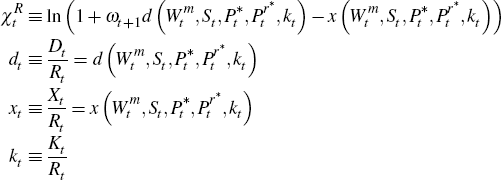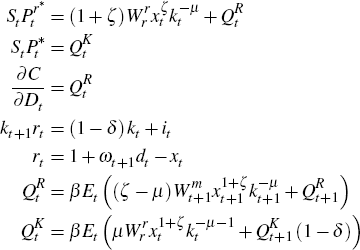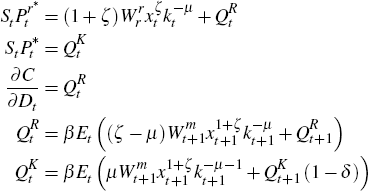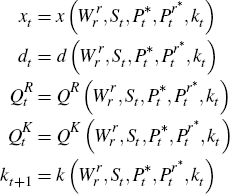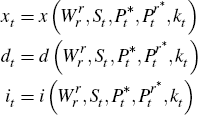RDP 2013-14: Reserves of Natural Resources in a Small Open Economy Appendix C: Analysis of the Partial Equilibrium Model
December 2013 – ISSN 1320-7229 (Print), ISSN 1448-5109 (Online)
- Download the Paper 863KB
Proposition 1. In the absence of investment adjustment costs, the equilibrium law of motion for reserves
can be rewritten as
where
Proof. In the absence of investment adjustment costs the firms' decision problem is given by
subject to:
The associated first-order conditions at an interior solution are
Note that the solutions to  can be solved from the simplified system
can be solved from the simplified system
yielding the policy functions
Noting that these policy functions do not include Rt in their argument, it follows that the law of motion for log reserves in equilibrium will be given by
where
is not a function of reserves, and so log reserves will have a unit root in equilibrium.
Proposition 2. Assume the firm solves the following dynamic program
subject to:
and where C(Dt,Rt) is homogeonous of degree one. In this case the equlibrium law of motion for log reserves can be also written as
where  is defined in Proposition 1.
is defined in Proposition 1.
Proof. This proof follows noting that the profit function is homogenous of degree one when C(Dt,Rt) is homogeonous of degree one. Since the constraints are also linearly homogeonous, the value function itself is linear homogenous and the associated policy functions are homogenous of degree one in the state variables Kt and Rt (see Stokey and Lucas (1989, Section 9.3) for a formal treatment). This implies the policy functions can be written as
and so the log-level of reserves in equilibrium will be given by
where dt and xt are not direct functions of Rt in the solution to the above program.


